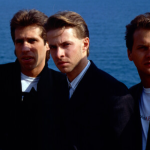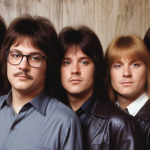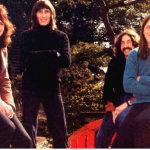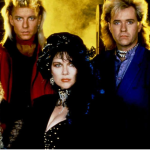“Disco Inferno” – The Trammps
- music
- July 1, 2024

“Disco Inferno” by The Trammps is a classic disco anthem released in 1976. It’s known for its energetic beat, catchy hooks, and vibrant horns, making it a quintessential dance floor hit during the disco era. Let’s explore the background of The Trammps, analyze the musical and lyrical elements of “Disco Inferno,” and discuss its cultural and historical significance.
Background of The Trammps
The Trammps were an American disco and soul band formed in Philadelphia in the early 1970s. Known for their energetic performances and catchy dance tunes, The Trammps gained fame with hits like “Disco Inferno,” “Hold Back the Night,” and “That’s Where the Happy People Go.” The band’s lineup included lead vocalist Jimmy Ellis, Harold Wade, Stanley Wade, Robert Upchurch, and Earl Young.
Song Analysis
“Disco Inferno” is characterized by its pulsating disco beat, driving bassline, and vibrant brass section. The song opens with a dynamic guitar riff and quickly builds momentum with its infectious groove. The rhythm section, including funky drums and percussion, provides a solid foundation for the song’s high-energy tempo.
The lyrics of “Disco Inferno” evoke the excitement and euphoria of a night out on the dance floor. The chorus, with its iconic refrain “Burn, baby, burn! Disco inferno!” became a rallying cry for disco enthusiasts, capturing the carefree and celebratory spirit of the disco era. The verses describe the electrifying atmosphere of a discotheque, where music and dancing serve as a form of liberation and self-expression.
Jimmy Ellis’s powerful and soulful vocals drive the song’s narrative, conveying a sense of urgency and exhilaration. His vocal delivery is complemented by the band’s tight instrumentation and energetic performance, creating a seamless blend of danceable rhythms and catchy melodies.
Cultural and Historical Context
Released in 1976, “Disco Inferno” emerged during the peak of the disco era, when disco music dominated the airwaves and dance clubs. The song’s infectious groove and vibrant production resonated with audiences, becoming a symbol of the disco movement’s hedonistic and inclusive ethos.
During the 1970s, disco music served as a cultural phenomenon that transcended boundaries of race, gender, and sexuality. “Disco Inferno” embodied this cultural shift, offering an escape from societal norms and a celebration of individuality through music and dance. The song’s popularity contributed to the mainstream success of disco and influenced popular culture during that era.
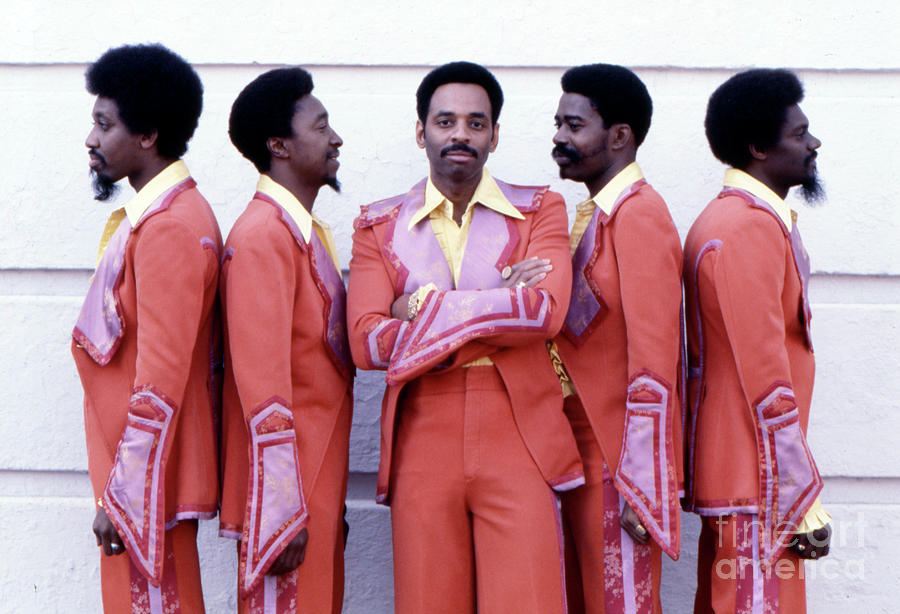
Reception and Impact
“Disco Inferno” was a commercial success for The Trammps, reaching number 11 on the Billboard Hot 100 chart and becoming a staple on disco playlists. The song’s popularity extended beyond its initial release, as it continues to be featured in films, television shows, and commercials. Its enduring appeal as a dance anthem has cemented its legacy in disco music history.
The song’s impact on popular culture is evident in its influence on subsequent generations of musicians and artists. “Disco Inferno” has been covered and sampled by various artists, further solidifying its status as a classic disco hit. Its vibrant energy and infectious rhythm continue to inspire dance enthusiasts and music lovers around the world.

Conclusion
In conclusion, “Disco Inferno” by The Trammps is a timeless disco anthem that captures the essence of the disco era with its infectious groove and celebratory lyrics. The song’s dynamic instrumentation, soulful vocals, and energetic performance have made it a beloved classic in dance music history. The Trammps’ ability to blend funk, soul, and disco influences resulted in a song that remains a staple on dance floors and a symbol of the carefree spirit of the disco movement. “Disco Inferno” continues to ignite passion and excitement among listeners, reaffirming its place as a legendary song in the disco genre.



